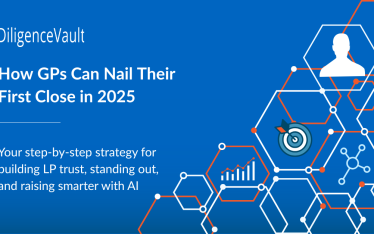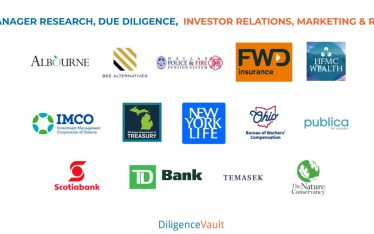The market for Environmental, Social, and Governance (ESG) investing is skyrocketing. Individual and institutional investors want to make sure that in addition to doing well financially, their investments are “doing good” for the world.
The notion of ESG investing isn’t new; the first sustainable mutual fund, Pax World, was founded in 1971 as a way for two Methodist ministers to avoid investing in the Vietnam War. From there, socially responsible investing continued to gain traction as the anti-apartheid movement called for divestment from South Africa in the 1980s, followed by concerns about investing in fossil fuels, to the launch of the Domini Social Index to track sustainable investments in the 1990s. In 2000, U.N Secretary General Kofi Annan launched the General Compact Initiative, which introduced the term ESG investing. (This article on the History of Sustainable Investing provides more information.)
What is Double Materiality?
In many ways, Europe has led the way in both normalizing and formalizing ESG investment strategies. The idea of “double materiality” in financial reporting is a European term that looks at both how an asset performs financially as well as its impact on environmental, social, and governance issues. And in 2019, Europe passed the Sustainable Finance Disclosure Regulation (SFDR) which mandates that financial managers and advisors disclose the ESG risks of their investments.
Today, many global investors, whether they are asset owners or asset managers, are looking for ways to expand their exposure to socially responsible investments. As these ESG investing trends take off, asset owners and asset managers alike need to understand how to measure the ESG impact of their investments and the different standards for conducting ESG due diligence.
ESG Investing Trends: The Risks
All investments carry some level of risk, and the first step in managing or mitigating risk is to measure it. For new investment strategies where there is no agreed upon single standard or set of definitions – such as ESG investing – measuring risk can be complicated.
There are, however, many indisputable ESG risks an asset can carry, which may lead to a significant negative impact on both the reputation and the financials of a company. These risks include, but are not limited to:
- Companies ignoring or skirting pollution regulations,
- Unsafe working conditions,
- Unhappy employees leading to decreasing productivity and output or even publicly denouncing the company,
- Violations of anti-corruption or anti-bribery regulations, or
- A major environmental disaster.
ESG risks also differ across asset classes. For example the ESG risks in real estate investing may be very different from those in private equity funds, which in turn are different in the public markets. And investing in passive index funds incurs the risk of the fund manager not holding assets with the ESG weighting you want, whereas by choosing individual equities you have more control over which companies you buy.
Another less obvious but no less precarious ESG risk is “greenwashing,” or giving the false impression that a company or asset manager is employing more advanced ESG standards than they actually are. This is a very real danger, as a lack of standards means managers must use their own judgment in how to market their funds, which means they may unintentionally (or intentionally) manipulate the ESG characteristics of their investments. Neither asset owners nor asset managers want to incur “headline risk” as a result of poor ESG governance.
However, the biggest risk of all is the fear of the unmeasurable. And, at this point in time, while there is not a single, generally accepted governance body nor is there one standard way to measure ESG risk, it is up to each asset allocator and fund manager to measure the ESG risk of an investment themselves. This can be quite complicated, given the many industry groups that are attempting to address ESG reporting.
Despite the complexities of measuring ESG risk, it is a necessity. The prevalence of impact investing is showing no signs of slowing down, so the investor who learns how to measure risk, creates a baseline, and starts to communicate about their efforts will come out ahead – both in terms of their ESG stated goals as well as conforming to the mandates of their constituents.
A focus on ESG can also be seen as a way to mitigate risk, due to the inherent focus on stability. A company that is building its business with an ESG lens ensures that good governance is in place. It requires protection from major environmental disasters, and it puts actions in place to focus on employee safety and satisfaction. All of these corporate actions feed into risk mitigation for the investor, which is a benefit.
ESG Investment Strategies: The Rewards
While there is a risk of ESG investing descending into a public relations stunt, there are some very real benefits to investing with an ESG lens, especially for those who are investing with a long time horizon.
Some companies are beginning to eschew short-term cost cutting as a way to create immediate value for investors in favor of stronger governance, investments in community or society, and/or reducing environmental impacts. While these actions may take longer to create investment value, ESG investing can significantly benefit the long-term investor.
Other actions like building eco-friendly or LEED-certified offices, committing to more diversity and equity in the boardroom, or focusing on improving net promoter scores can have a positive impact on both financial performance and on brand reputation.
ESG investing can lead the movement to “better capitalism” from both a financial and a societal perspective.
ESG Investing: The Ramifications
It’s fair to say the benefits of ESG investing outweigh the risks, given the rise we have seen in ESG interest from both allocators and managers. Allocators are requesting more ESG information, which is forcing managers to respond to requests more frequently and with more depth.
Even though ESG standards are still a work in progress, reporting requirements are increasing. Investors want to know:
- Is the asset manager getting the data they need?
- Is that information correct?
- Can they benchmark it and report it correctly?
Before you take action and start impact investing, you need to understand more than just the risks and rewards. You need to know how to measure ESG risk.
Due Diligence is Key to the Future of ESG Investing
ESG standards are formative and there are a multitude of industry groups that are trying to help with ESG reporting. But how do you know which metrics are valid and compliant? How do you aggregate those metrics? How can you ensure you’re comparing apples to apples?
A good ESG due diligence methodology can help. The DiligenceVault platform provides a comprehensive framework to base you ESG data collection methodology. It helps you capture and monitor key ESG data points using a number of predefined industry standard reporting templates, such as the ESG Data Convergence Project, InvestEurope, or UN PRI, or you can create your own template. You will have the ability to look at ESG reporting standards in any asset class, industry, or market. You can then run reports to view the information in a way that is most meaningful for you and your stakeholders.
The cloud-based platform is updated in real time, so as new questions are asked or information from underlying managers or portfolio companies is added, the information is instantaneously available. As ESG reporting standards evolve and converge, ESG data will become more homogenized, so ‘apples-to-apples’ comparisons and subsequent benchmarking will become easier.
As ESG-related regulations and standards emerge across the industry, technology will play an increasingly more important role in aggregating ESG metrics and allowing for comparison in an equitable and easy manner is the best way to manage ESG due diligence.



